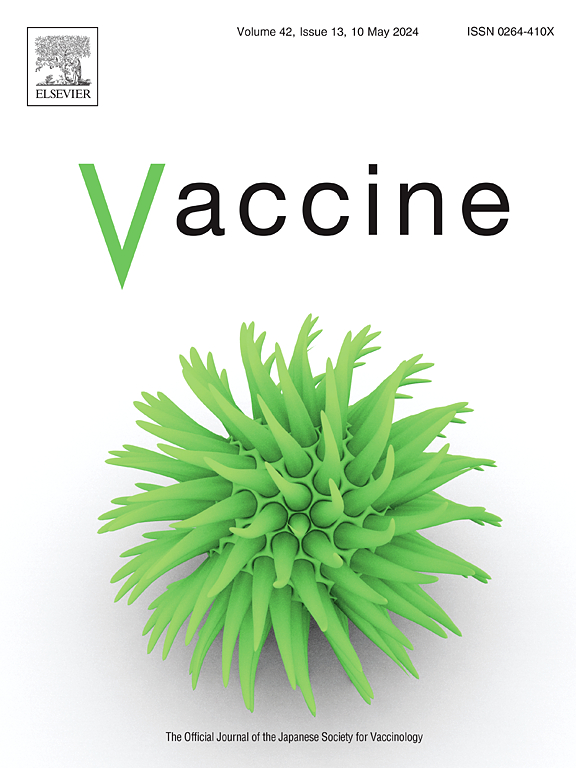人乳头瘤病毒(HPV)疫苗接种干预措施的有效策略,以增加农村,低社会经济,土著和移民人口的吸收:范围审查
IF 4.5
3区 医学
Q2 IMMUNOLOGY
引用次数: 0
摘要
人类乳头瘤病毒(HPV)疫苗接种是减少HPV相关癌症(如宫颈癌)的关键策略。农村、低社会经济地位、少数民族、土著和移民人口在获得HPV疫苗接种时往往遭遇不平等。方法本综述检索了6个数据库,收集了测量农村、低社会经济地位、少数民族、土著或流动青少年-青年人口HPV疫苗接种率的干预研究。策略根据其环境进行分类:临床、学校、社区,或这些环境中的一种或多种的组合。结果46项研究提高HPV疫苗接种公平性的有效策略包括:(1)通过讲义、多语言材料和使用推定语言的卫生保健对话传播信息;(2)“提示”使用全执业协调标记患者记录,提醒患者,并提醒他们预约HPV疫苗接种;(3)卫生保健专业人员(HCP)培训,有效沟通HPV疫苗接种信息,并将HCP拥护者纳入HPV疫苗接种倡导者;(4)以学校为基础的项目,采用现场疫苗接种、学生参与活动和与诊所合作等策略,提高HPV疫苗接种的“覆盖率”;(5)以家庭为中心的护理,推动HPV疫苗接种以预防癌症。结论干预措施虽然需要准备和协调才能启动,但对HPV疫苗接种率有积极影响。在农村、低社会经济地位、少数民族、土著和流动青少年-青年人口中,有广泛的有效策略来增加HPV疫苗接种的公平性。未来对有效战略的评价可以探讨其可持续性和干预措施的长期执行情况。本文章由计算机程序翻译,如有差异,请以英文原文为准。
Effective strategies in human papillomavirus (HPV) vaccination interventions to increase uptake in rural, low socioeconomic, indigenous and migrant populations: A scoping review
Background
Human Papillomavirus (HPV) vaccination is a key strategy to reduce HPV-related cancers such as cervical cancer. Rural, low socioeconomic status, ethnic minority, Indigenous and migrant populations often experience inequity when accessing HPV vaccination.
Methods
This scoping review searched six databases for intervention studies which measured the uptake of HPV vaccination of rural, low SES, ethnic minority, Indigenous or migrant adolescent-young adult population. Strategies were categorised according to their setting: clinical, school-based, community, or a combination of one or more of these settings.
Results
Effective strategies from 46 studies which increased equity in HPV vaccination uptake included: (1) Information disseminated through handouts, multilingual material, and health care conversations using presumptive language; (2) ‘Prompting’ using a practice-wide coordination to flag patient records, remind patients, and alert them of their appointment for HPV vaccination; (3) Health Care Professional (HCP) training to communicate information effectively about HPV vaccination, and include HCP champions as HPV vaccination advocates; (4) School-based programs, using strategies such as on-site vaccination, student-engagement fetes and partnership with clinics to increase HPV vaccination ‘catch-up’; (5) Family-centred care to motivate HPV vaccination for cancer prevention.
Conclusion
Although interventions demand preparation and coordination to initiate, they can positively influence the uptake of HPV vaccination. There are a wide range of effective strategies to increase equity in HPV vaccination in the rural, low SES, ethnic minority, Indigenous and migrant adolescent-young adult populations. Future evaluation of effective strategies could explore their sustainability and long-term implementation in interventions.
求助全文
通过发布文献求助,成功后即可免费获取论文全文。
去求助
来源期刊

Vaccine
医学-免疫学
CiteScore
8.70
自引率
5.50%
发文量
992
审稿时长
131 days
期刊介绍:
Vaccine is unique in publishing the highest quality science across all disciplines relevant to the field of vaccinology - all original article submissions across basic and clinical research, vaccine manufacturing, history, public policy, behavioral science and ethics, social sciences, safety, and many other related areas are welcomed. The submission categories as given in the Guide for Authors indicate where we receive the most papers. Papers outside these major areas are also welcome and authors are encouraged to contact us with specific questions.
 求助内容:
求助内容: 应助结果提醒方式:
应助结果提醒方式:


